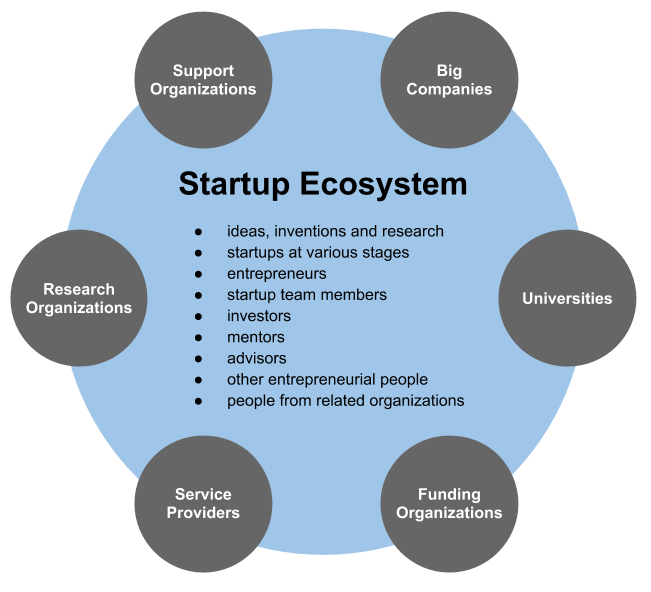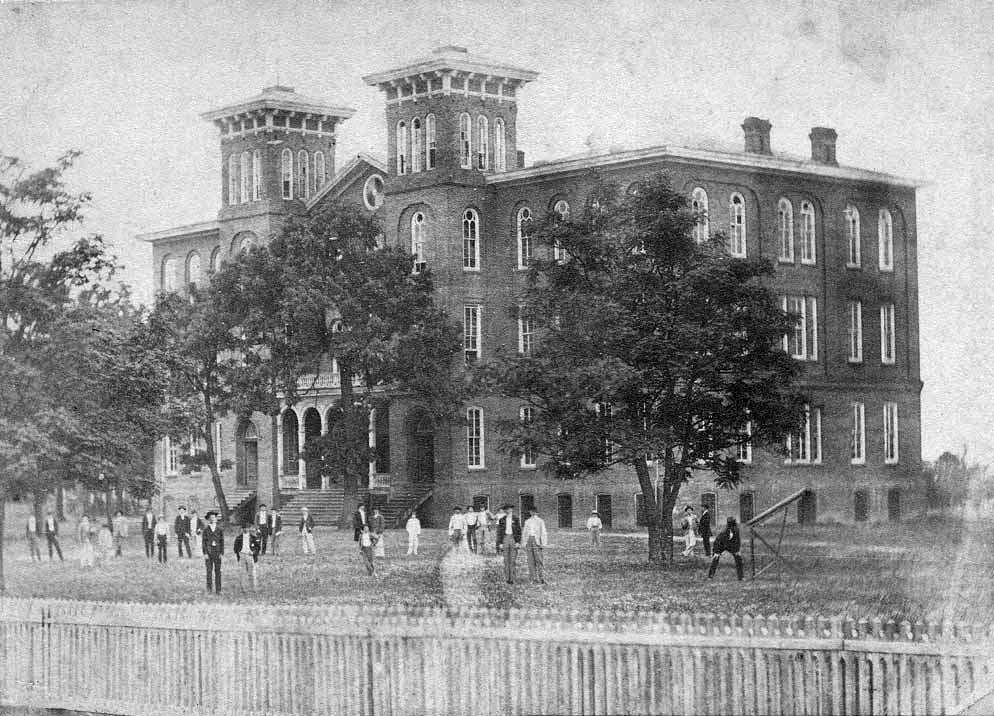|
Virtual Business Incubator
Business incubators began in the 1950s and took off in the late 1990s as support for startup companies who need advice and venture capital to get their ideas off the ground. As the dot-com bubble burst, many high-tech business incubators did so too. Today, the model of a business incubator is changing. Several of the incubator companies who survived the dot-com bubble switched to a virtual model. A definition of a virtual incubator is provided by IdeaGist as: ''In a broader sense, virtual incubators can be defined as a catalyst for socio-economic development, providing a process for developing early stage ideas into viable ventures.'' They offer formal and informal learning opportunities and connect entrepreneurs to an ecosystem of related services. While virtual incubators are still getting defined in a fast-changing world, they have a potential of disrupting the traditional business incubation model. The traditional incubator model requires a startup venture to set up shop at th ... [...More Info...] [...Related Items...] OR: [Wikipedia] [Google] [Baidu] |
Business Incubator
Business incubator is an organization that helps startup companies and individual entrepreneurs to develop their businesses by providing a fullscale range of services starting with management training and office space and ending with venture capital financing. The National Business Incubation Association (NBIA) defines business incubators as a catalyst tool for either regional or national economic development. NBIA categorizes its members' incubators by the following five incubator types: academic institutions; non-profit development corporations; for-profit property development ventures; venture capital firms, and a combination of the above. Business incubators differ from research and technology parks in their dedication to startup and early-stage companies. Research and technology parks, on the other hand, tend to be large-scale projects that house everything from corporate, government, or university labs to very small companies. Most research and technology parks do not o ... [...More Info...] [...Related Items...] OR: [Wikipedia] [Google] [Baidu] |
Startup Company
A startup or start-up is a company or project undertaken by an entrepreneur to seek, develop, and validate a scalable business model. While entrepreneurship refers to all new businesses, including self-employment and businesses that never intend to become registered, startups refer to new businesses that intend to grow large beyond the solo founder. At the beginning, startups face high uncertainty and have high rates of failure, but a minority of them do go on to be successful and influential.Erin Griffith (2014)Why startups fail, according to their founders Fortune.com, 25 September 2014; accessed 27 October 2017 Actions Startups typically begin by a founder (solo-founder) or co-founders who have a way to solve a problem. The founder of a startup will begin market validation by problem interview, solution interview, and building a minimum viable product (MVP), i.e. a prototype, to develop and validate their business models. The startup process can take a long period of time (by so ... [...More Info...] [...Related Items...] OR: [Wikipedia] [Google] [Baidu] |
Dot-com Bubble
The dot-com bubble (dot-com boom, tech bubble, or the Internet bubble) was a stock market bubble in the late 1990s, a period of massive growth in the use and adoption of the Internet. Between 1995 and its peak in March 2000, the Nasdaq Composite stock market index rose 400%, only to fall 78% from its peak by October 2002, giving up all its gains during the bubble. During the dot-com crash, many online shopping companies, such as Pets.com, Webvan, and Boo.com, as well as several communication companies, such as Worldcom, NorthPoint Communications, and Global Crossing, failed and shut down. Some companies that survived, such as Amazon, lost large portions of their market capitalization, with Cisco Systems alone losing 80% of its stock value. Background Historically, the dot-com boom can be seen as similar to a number of other technology-inspired booms of the past including railroads in the 1840s, automobiles in the early 20th century, radio in the 1920s, television in the 19 ... [...More Info...] [...Related Items...] OR: [Wikipedia] [Google] [Baidu] |
High-tech
High technology (high tech), also known as advanced technology (advanced tech) or exotechnology, is technology that is at the cutting edge: the highest form of technology available. It can be defined as either the most complex or the newest technology on the market. The opposite of high tech is '' low technology'', referring to simple, often traditional or mechanical technology; for example, a slide rule is a low-tech calculating device. When high tech becomes old, it becomes low tech, for example vacuum tube electronics. The phrase was used in a 1958 ''The New York Times'' story advocating "atomic energy" for Europe: "... Western Europe, with its dense population and its high technology ...." Robert Metz used the term in a financial column in 1969, saying Arthur H. Collins of Collins Radio "controls a score of high technology patents in a variety of fields." and in a 1971 article used the abbreviated form, "high tech." A widely used classification of high-technological manuf ... [...More Info...] [...Related Items...] OR: [Wikipedia] [Google] [Baidu] |
United States
The United States of America (U.S.A. or USA), commonly known as the United States (U.S. or US) or America, is a country primarily located in North America. It consists of 50 states, a federal district, five major unincorporated territories, nine Minor Outlying Islands, and 326 Indian reservations. The United States is also in free association with three Pacific Island sovereign states: the Federated States of Micronesia, the Marshall Islands, and the Republic of Palau. It is the world's third-largest country by both land and total area. It shares land borders with Canada to its north and with Mexico to its south and has maritime borders with the Bahamas, Cuba, Russia, and other nations. With a population of over 333 million, it is the most populous country in the Americas and the third most populous in the world. The national capital of the United States is Washington, D.C. and its most populous city and principal financial center is New York City. Paleo-Americ ... [...More Info...] [...Related Items...] OR: [Wikipedia] [Google] [Baidu] |
Auburn University
Auburn University (AU or Auburn) is a public land-grant research university in Auburn, Alabama. With more than 24,600 undergraduate students and a total enrollment of more than 30,000 with 1,330 faculty members, Auburn is the second largest university in Alabama. It is one of the state's two public flagship universities. The university is classified among "R1: Doctoral Universities – Very High Research Activity" and its alumni include 5 Rhodes Scholars and 5 Truman Scholars. Auburn was chartered on February 1, 1856, as East Alabama Male College, a private liberal arts school affiliated with the Methodist Episcopal Church, South. In 1872, under the Morrill Act, it became the state's first land-grant university and was renamed as the Agricultural and Mechanical College of Alabama. In 1892, it became the first four-year coeducational school in Alabama, and in 1899 was renamed Alabama Polytechnic Institute (API) to reflect its changing mission. In 1960, its name was changed t ... [...More Info...] [...Related Items...] OR: [Wikipedia] [Google] [Baidu] |
Springfield Technical Community College
Springfield Technical Community College (STCC, Stick) is a public Hispanic-serving technical college in Springfield, Massachusetts. It is the only technical community college in the Commonwealth of Massachusetts. Located on the site of the Springfield Armory National Park, which was founded by Henry Knox and George Washington during the Revolutionary War, Springfield Technical Community College now occupies many of the buildings used by the U.S. Armory at Springfield prior to the Armory's closure in 1969. While of the site remain in the hands of the U.S. National Park Service for historic preservation, comprise the college campus. Numerous historic buildings have been repurposed as classrooms, in addition to newer facilities built on-site. STCC offers over 90 associate degree and certificate programs. Students may transfer to four-year colleges and universities such as Westfield State University, the University of Massachusetts Amherst, as well as members of the Cooperatin ... [...More Info...] [...Related Items...] OR: [Wikipedia] [Google] [Baidu] |
Seed Accelerator
Startup accelerators, also known as seed accelerators, are fixed-term, cohort-based programs, that include mentorship and educational components and culminate in a public pitch event or demo day. While traditional business incubators are often government-funded, generally take no equity, and rarely provide funding, accelerators can be either privately or publicly funded and cover a wide range of industries. Unlike business incubators, the application process for seed accelerators is open to anyone but highly competitive. There are specific accelerators, such as corporate accelerators, which are often subsidiaries or programs of larger corporations that act like seed accelerators. Distinctive qualities The main differences between business incubators, startup studios, and accelerators are: # The application process is open to anyone but highly competitive. Y Combinator and TechStars have application acceptance rates between 1% and 3%. # Seed investment in startups is usually mad ... [...More Info...] [...Related Items...] OR: [Wikipedia] [Google] [Baidu] |
Business Incubators
Business incubator is an organization that helps startup companies and individual entrepreneurs to develop their businesses by providing a fullscale range of services starting with management training and office space and ending with venture capital financing. The National Business Incubation Association (NBIA) defines business incubators as a catalyst tool for either regional or national economic development. NBIA categorizes its members' incubators by the following five incubator types: academic institutions; non-profit development corporations; for-profit property development ventures; venture capital firms, and a combination of the above. Business incubators differ from research and technology parks in their dedication to startup and early-stage companies. Research and technology parks, on the other hand, tend to be large-scale projects that house everything from corporate, government, or university labs to very small companies. Most research and technology parks do not o ... [...More Info...] [...Related Items...] OR: [Wikipedia] [Google] [Baidu] |



